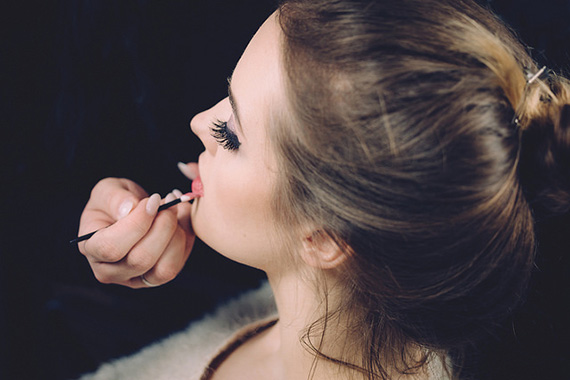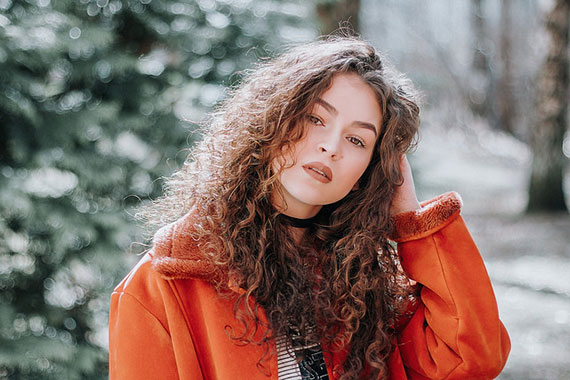This article is aimed newbies and those who want to branch out into fashion or people photography. If you’re new to the genre, you need to get a portfolio of work together so potential clients can see what you have to offer.
We’re going to presume that you’ve decided what it is you’re going to be photographing along with your idea and theme. I’m going to talk you through an idea for a photo shoot I did in college so I can tell you about how I planned it. I chose a 1940s style pin-up.
So we’ve chosen our theme 1940s pin-up. Now we need to think about these things:
- How many models do we want to use?
- Who will do the hair and make up?
- Who will do the wardrobe styling?
- Where are we going to do the photo shoot?
- What equipment will we need?
Models
Say we’ve decided we want to use two models. That’s great, but where are we going to find two models, and how much will they cost? When I was in college, I didn’t have a lot of money, so paying for models wasn’t really an option for me. A lot of people, when making a portfolio, will use their friends or family. This isn’t always the best idea. If they are genuinely suitable for your photo shoot, though, it’s great use a friend or family member. Otherwise you need to find a way to advertise for a model. I used a few internet advert sites to put up a casting call stating I needed a model and describing the shoot. There are also websites where photographers/models/stylists, etc. can upload their portfolios for everyone to view to work on a TFP basis (time for print/digital images instead of money). Working with someone on a TFP basis is great if you’re updating or starting a portfolio; you don’t pay with cash–just your time and photos. It’s a win-win situation for everyone.
Hair and Makeup
So we’ve got our two models who are willing to work on a TFP basis. We now need to find someone who can do their hair and makeup. We can find a hair and makeup artist exactly the same way we found our models: advertise with a casting call or browse the online portfolio sites and ask if they’d be willing to work on a TFP basis. Once you’ve found a hair and makeup artist, send them links to images of the models they’ll be working with and images of ideas you have for makeup. In this case, we would send the makeup artist images of 1940s pin-up girls suggesting we need make up done in a similar way. It’s important to communicate with your team so everybody knows what their role is before the day of the photo shoot.

photo by freestocks.org
Wardrobe Stylist
Again, when finding a wardrobe stylist, advertise and ask. When working with a stylist, however, you may need to spend some money on hiring clothing. As the 1940s theme is a dated and period look, I had a stylist who rented some clothing from a period costume store. Also, when working with a stylist, it’s import to show them images of ideas and who they’ll be working with, including height, clothing size, etc. You can’t afford to have your stylist show up with clothing that doesn’t fit your models.

photo by Jonas Svidras
Location
So we’ve got our team together. It’s now time to decide where we’ll be doing the photo shoot; this is where you may have to start paying for things. If you’re still in college you should be able to use your college photography studio for a photo shoot. If not, there are places that are willing to rent out their studios when not in use at roughly £50 for half a day. There’s also the option of shooting on location; this is what I did. I found an aircraft museum that had plenty of period aeroplanes and military planes and got in touch with them, explaining that I would like to do a photo shoot. This museum was kind enough to let me use their premises for free on the basis that I wouldn’t be making any profit from the images. Once I had edited the images, I sent them a few via email as a thank you. I also did this at a period train station. Again, I explained what I wanted to do, that the images wouldn’t be used for profit, and again they kindly agreed. Sometimes it’s simply a case of asking. Not everybody will say yes, but it’s worth putting yourself out there, because in some cases they do.
Equipment
Now you’ve got your team and your locations; you now need to think about equipment. I was shooting both outdoors and indoors, so I decided to take flashes/strobes with me. They weren’t anything fancy just a couple of speed lights on light stands with shoot through umbrellas to soften the light. Equipment is very important. If you’re going to be using flashes, don’t forget spare batteries. If you’re going to be taking wide shots and close up shots, make sure you take both lenses. If you’re unsure whether or not to take something, then take it just in case. If you decide you don’t need it, no problem. However if you decide you do need it and have left it at home, you do have a problem.
Overview
Let’s do a quick overview:
- Advertise for a model, browse portfolio sites, and ask if they’d be willing to work a TFP basis.
- Do the same for makeup artists and stylists–advertise and ask!
- Make sure you communicate with your team before the day of the photo shoot. Everybody needs to know their role and what they’ll be doing so there aren’t any problems on the day.
- Scout for locations. Do some looking to find the right place, and don’t be afraid to ask owners of premises if you can do a photo shoot. Some love the idea, especially when they get images afterward.
- Be prepared. Make sure you pack your equipment the night before, check it, and then check it again. Don’t leave behind anything you might need.
And that’s it. It can be hard work setting up a photo shoot, but it doesn’t have to be expensive. You’ll find models and stylists in the same position as you–looking to build a portfolio on a budget. Just don’t be afraid to ask.
About the Author
This articles was written by Catherine A Alcock from Pro Composite, a website dedicated to teaching you about photography and Photoshop—from the basics of changing colours in post production to creating realistic composites.
Like This Article?
Don't Miss The Next One!
Join over 100,000 photographers of all experience levels who receive our free photography tips and articles to stay current:








Leave a Reply